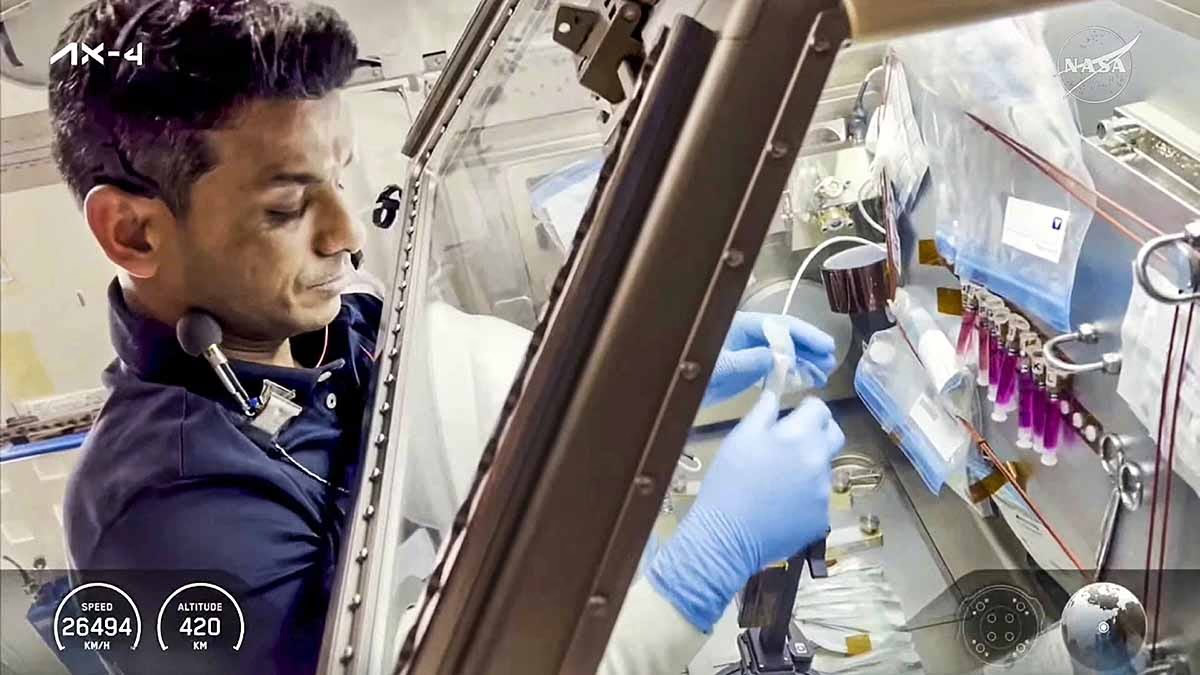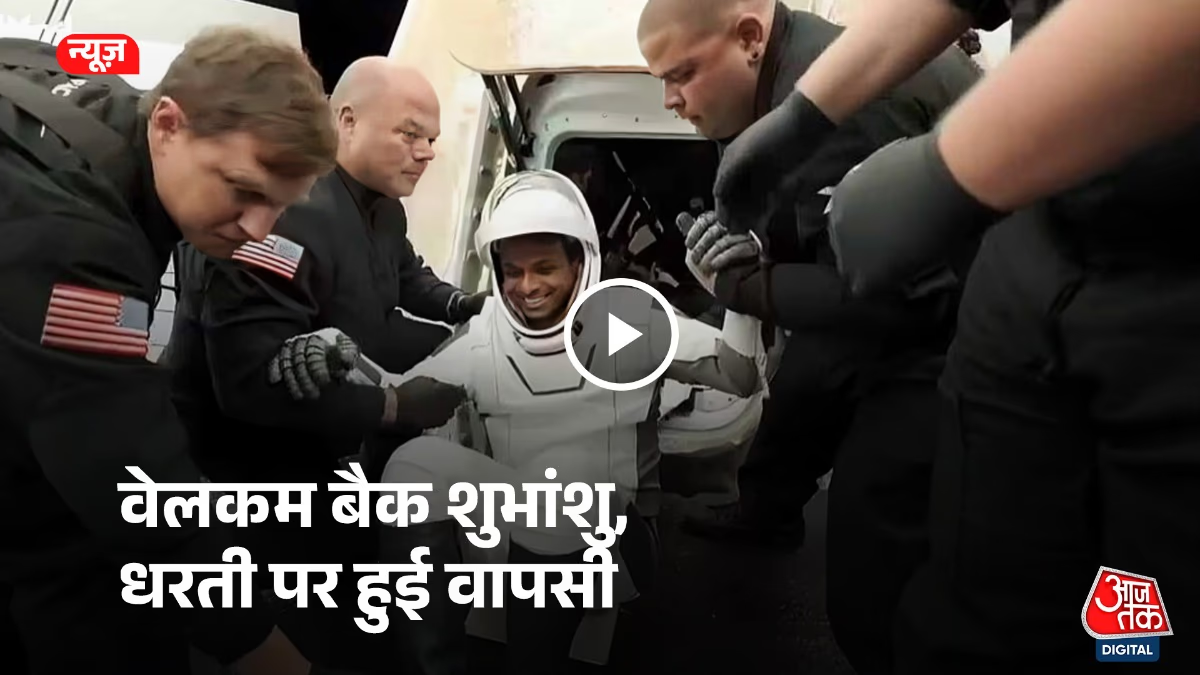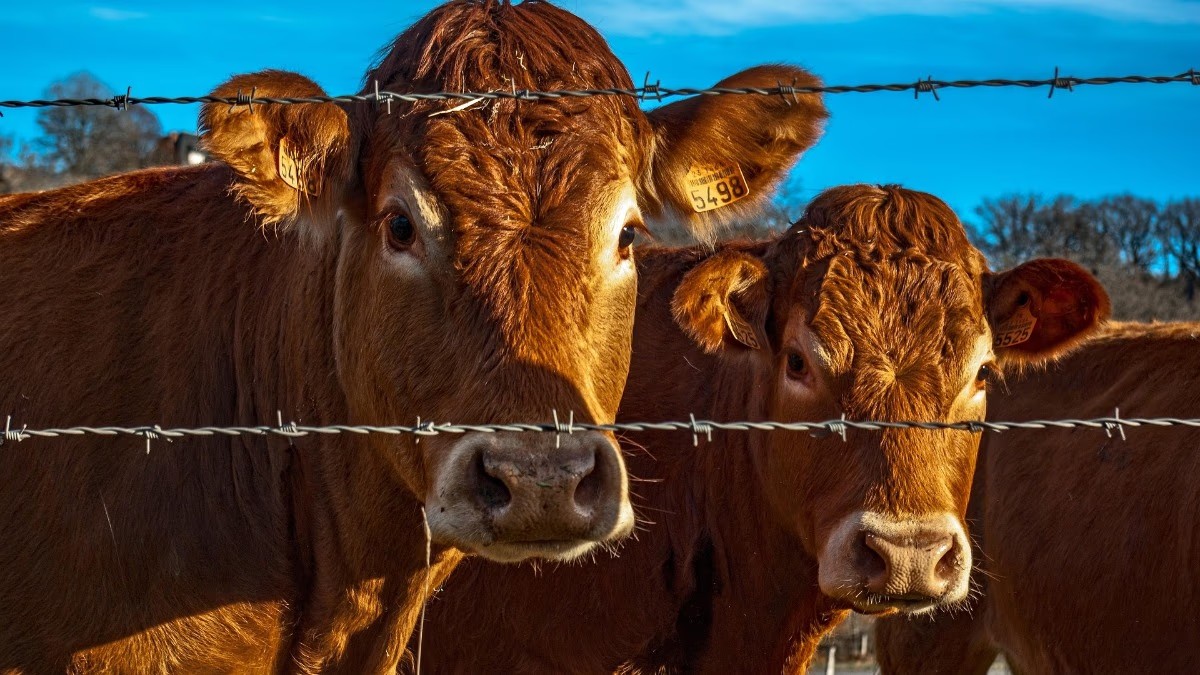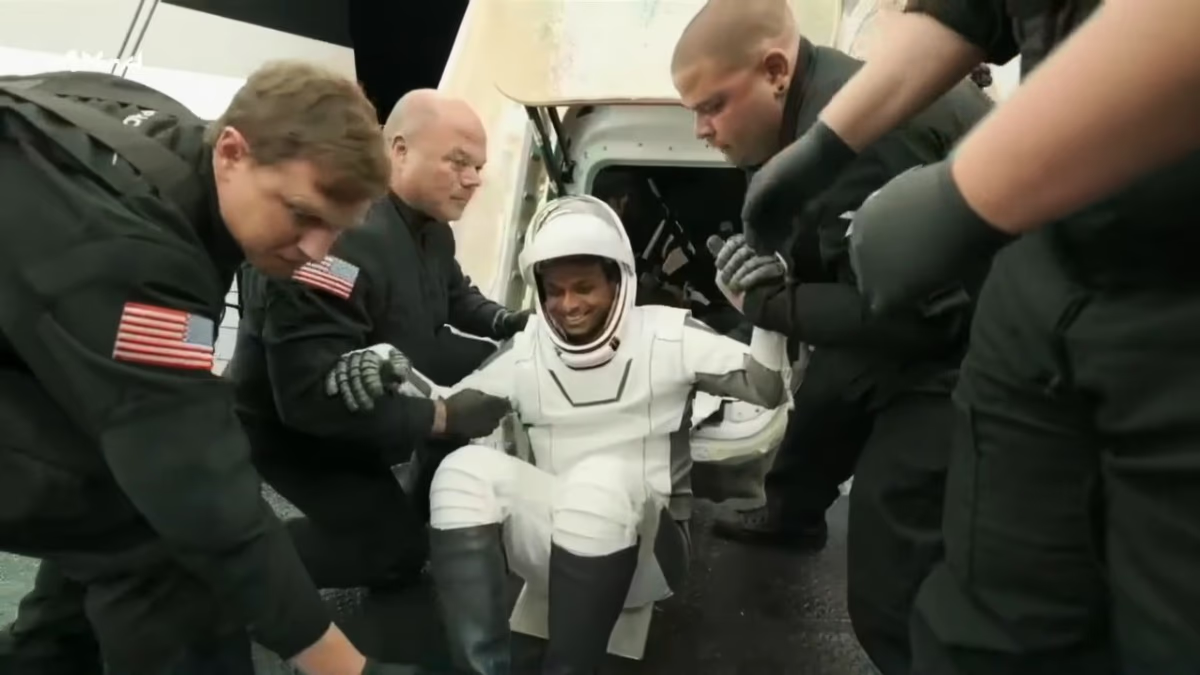Indian astronaut Group Captain Shubhanshu Shukla completed his historic 18-day journey on the International Space Station (ISS) and returned to Earth. This was his first space voyage, as part of Ax-4. During this mission, he not only conducted scientific experiments but also gathered significant experiences for India's space program. Let's explore what Shubhanshu did during this time and the experiments he carried out.
The Journey of Shubhanshu on ISS
On June 25, 2025, Shubhanshu Shukla launched from Florida's Kennedy Space Center aboard SpaceX’s Falcon 9 rocket and docked with the ISS on June 26 at 4:01 PM IST. As the first Indian to reach the ISS, he embraced numerous activities, including scientific research, public engagements, and preparations for India's Gaganyaan mission.
Also Read:
Scientific Research and Experiments
Shubhanshu and his team conducted about 60 experiments on the ISS, with seven specifically designed by the Indian Space Research Organisation (ISRO). These experiments are crucial for India's future space missions, focusing on Gaganyaan and lunar explorations. Key experiments include...
Myogenesis
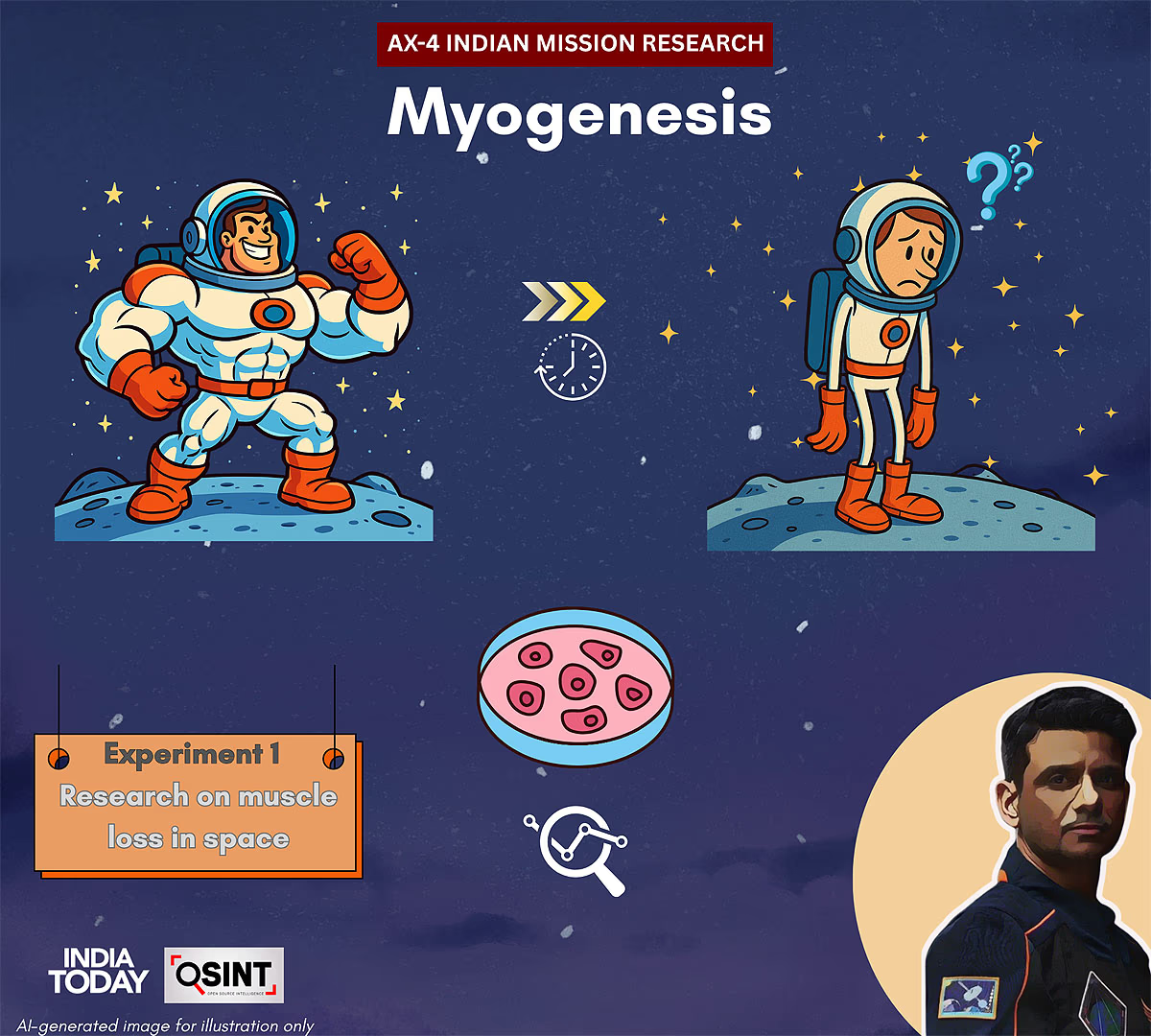
Source: aajtak
In this experiment, Shubhanshu studied muscle loss in the microgravity of space, observing how muscles weaken without gravity and finding ways to mitigate this. This could also aid in treating conditions like osteoporosis on Earth.
Tardigrade Study
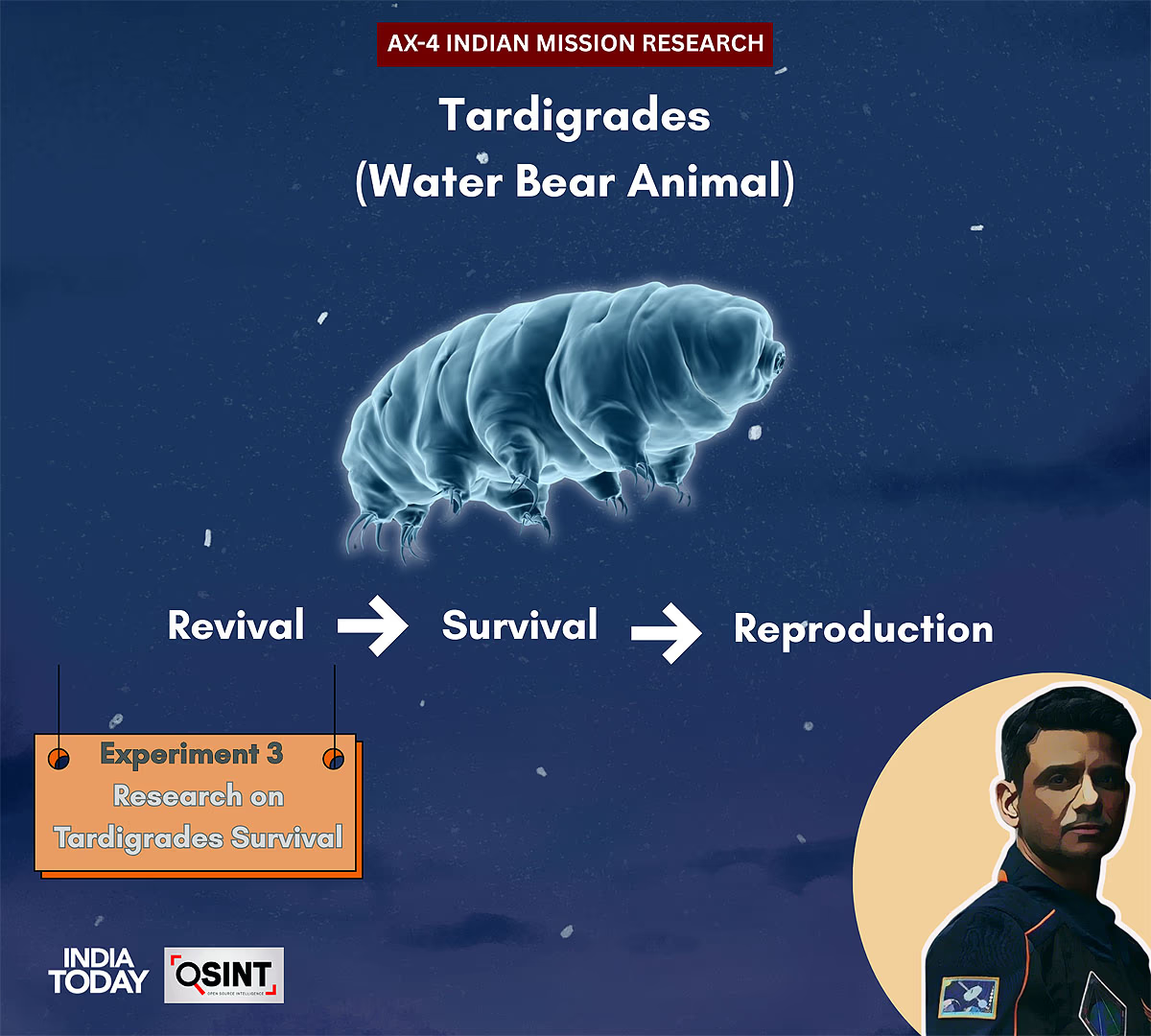
Source: aajtak
Shubhanshu explored tiny micro-animals known as tardigrades, which are resilient in extreme environments. His observations of their adaptation in space could inform long-duration missions like trips to Mars.
Seed Sprouting
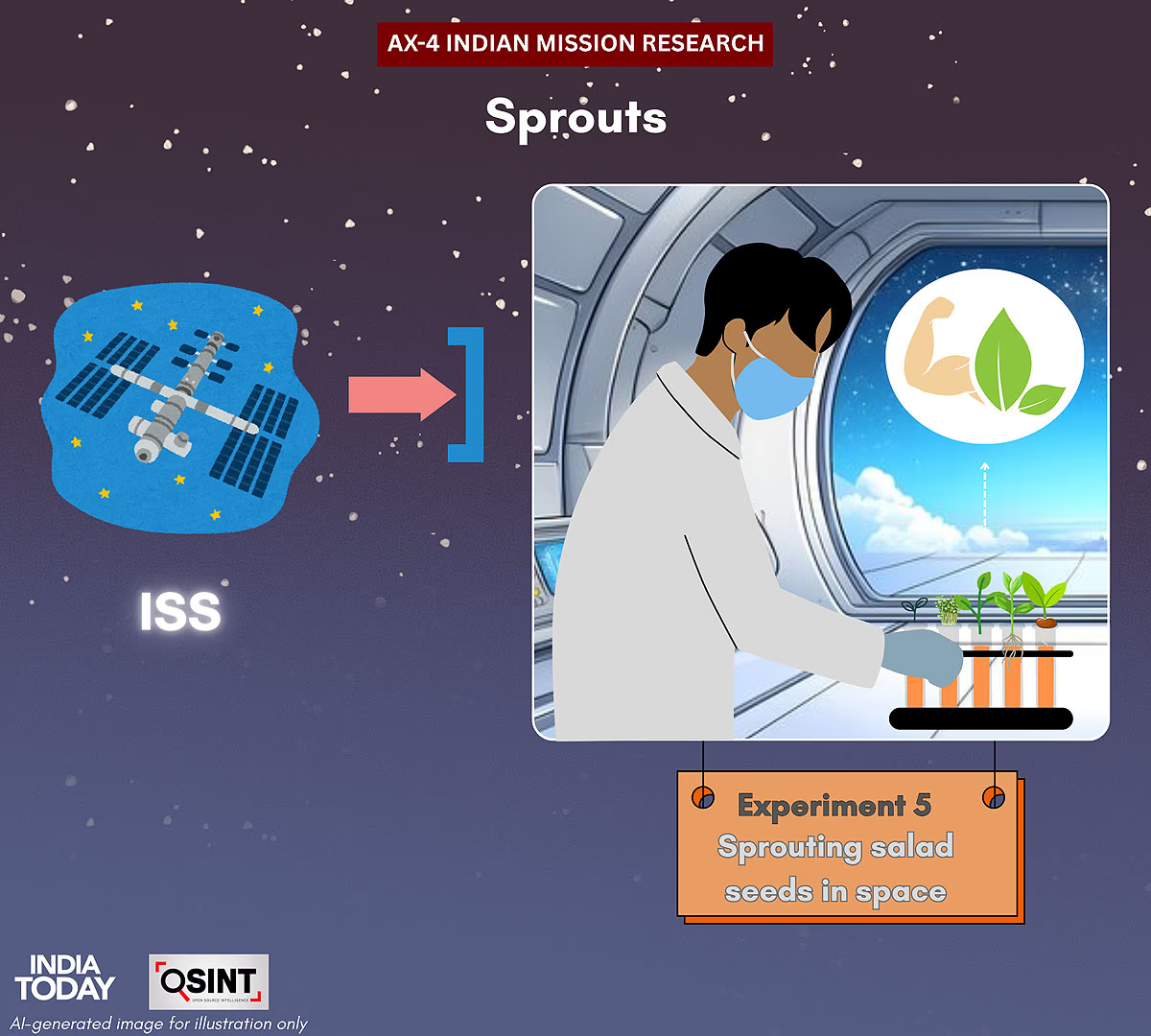
Source: aajtak
Shubhanshu experimented with fenugreek and mung bean seeds in space, examining their genetics, microbial changes, and nutritional values to understand the prospects of farming in space.
Cyanobacteria Study
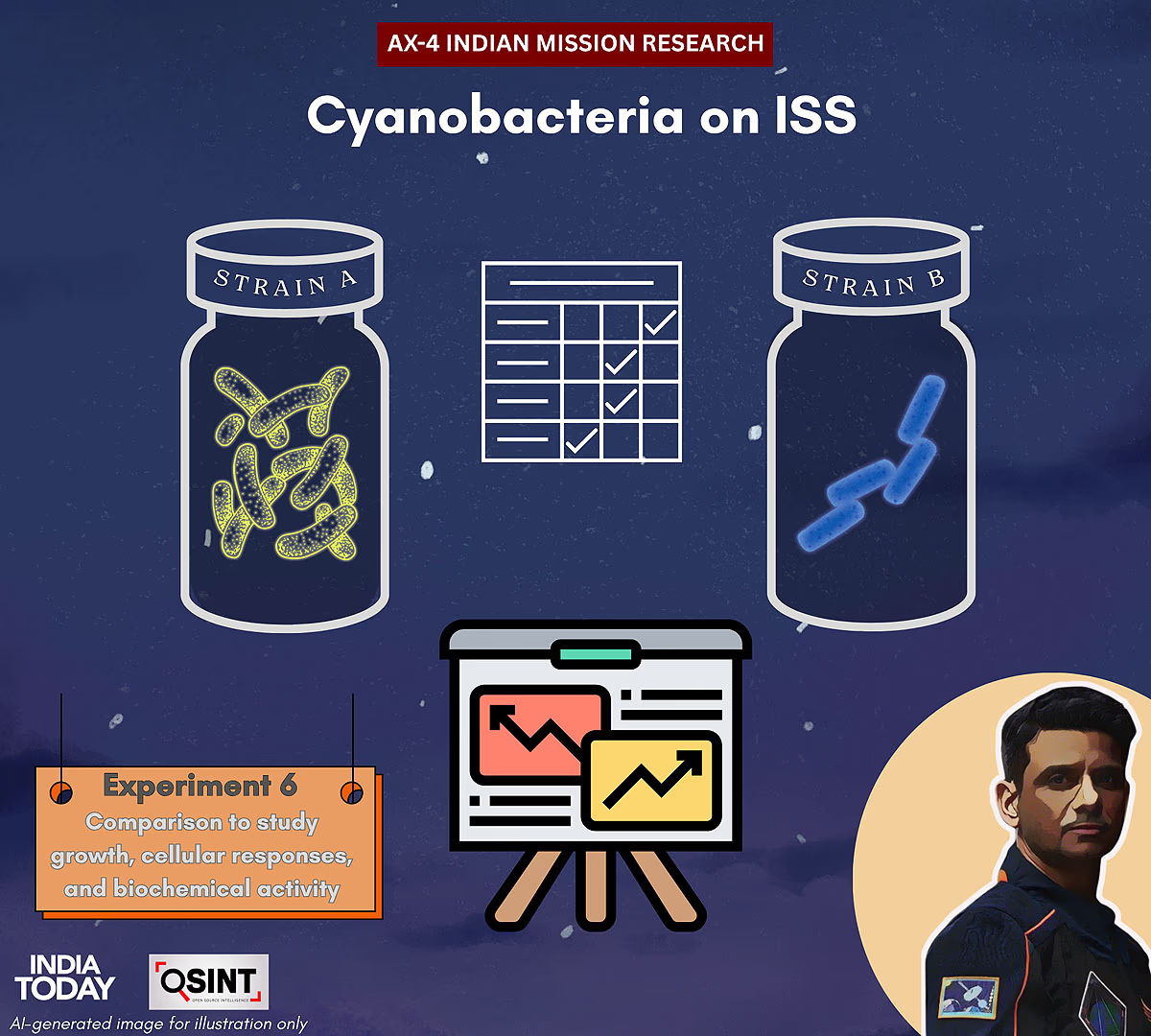
Source: aajtak
This experiment involved analyzing the growth and activity of cyanobacteria, which can produce oxygen and fuel, essential for life support systems on Moon or Mars futures.
Microalgae Experiment
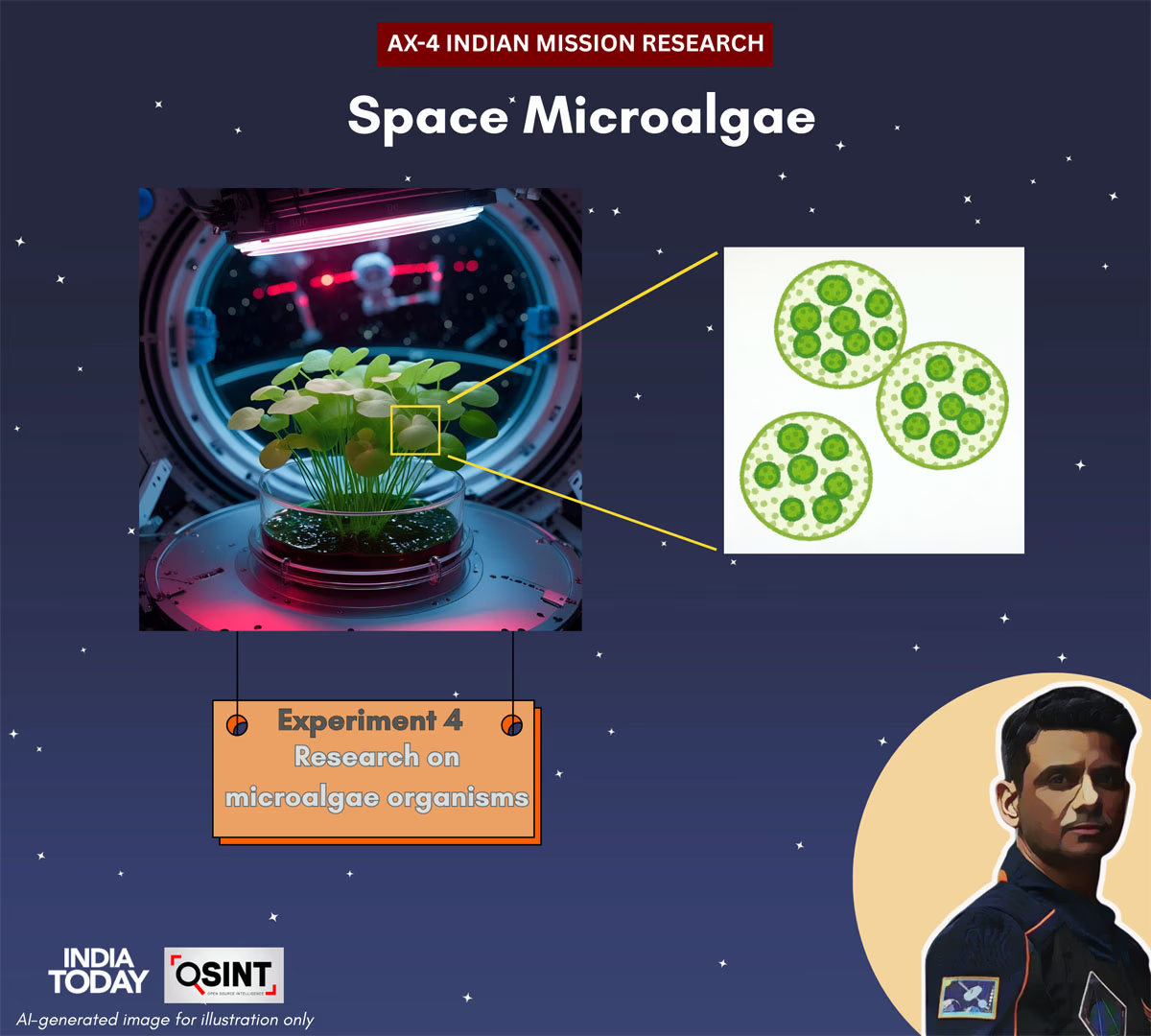
Source: aajtak
Shubhanshu tested microalgae for its potential as a source of food, oxygen, and biofuel in space, crucial for deep-space missions.
Crop Seeds Study
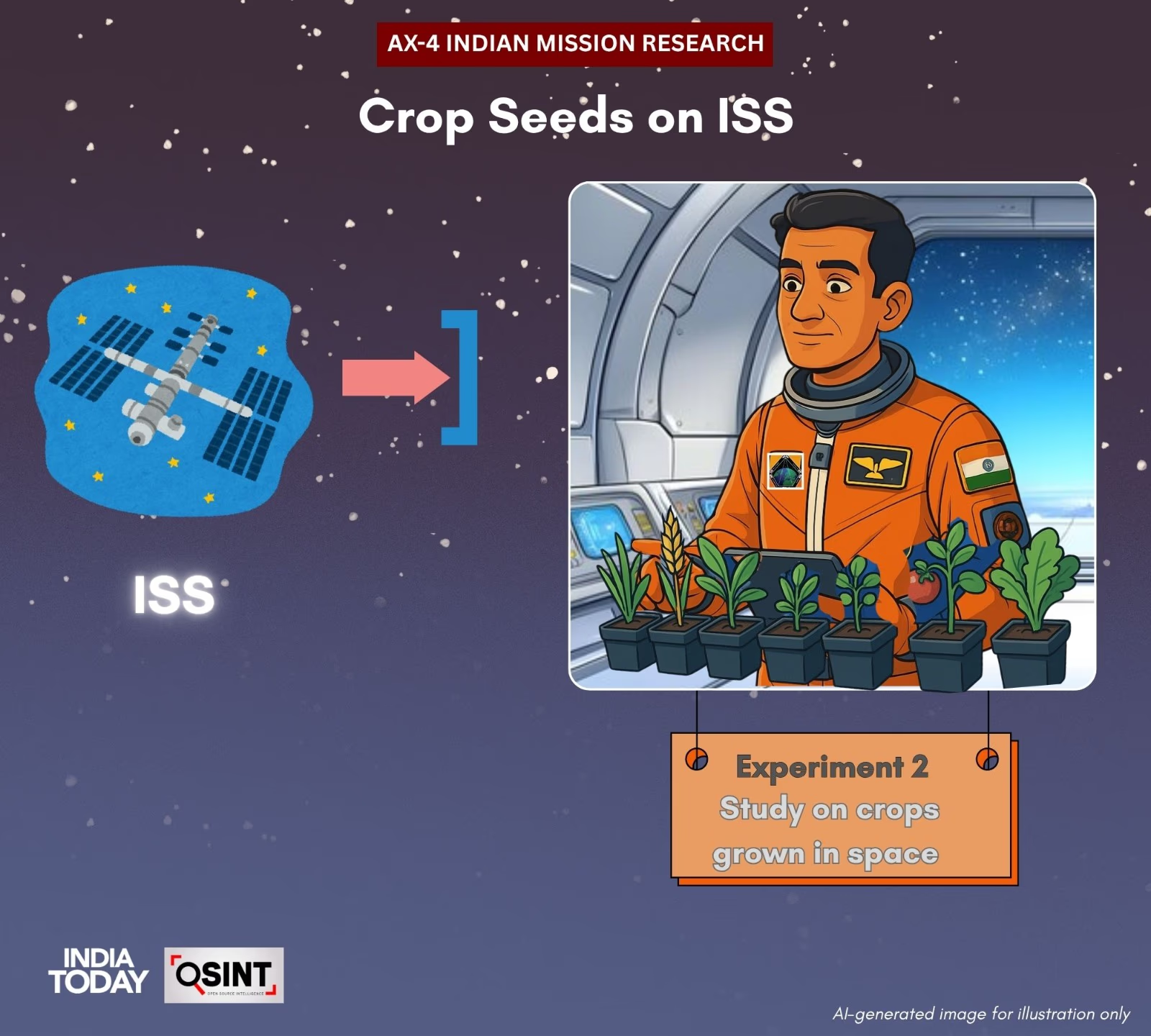
Source: aajtak
He researched the growth of six types of crop seeds in space, aiming to understand genetic changes, with insights applied over multiple Earth generations.
Voyager Display
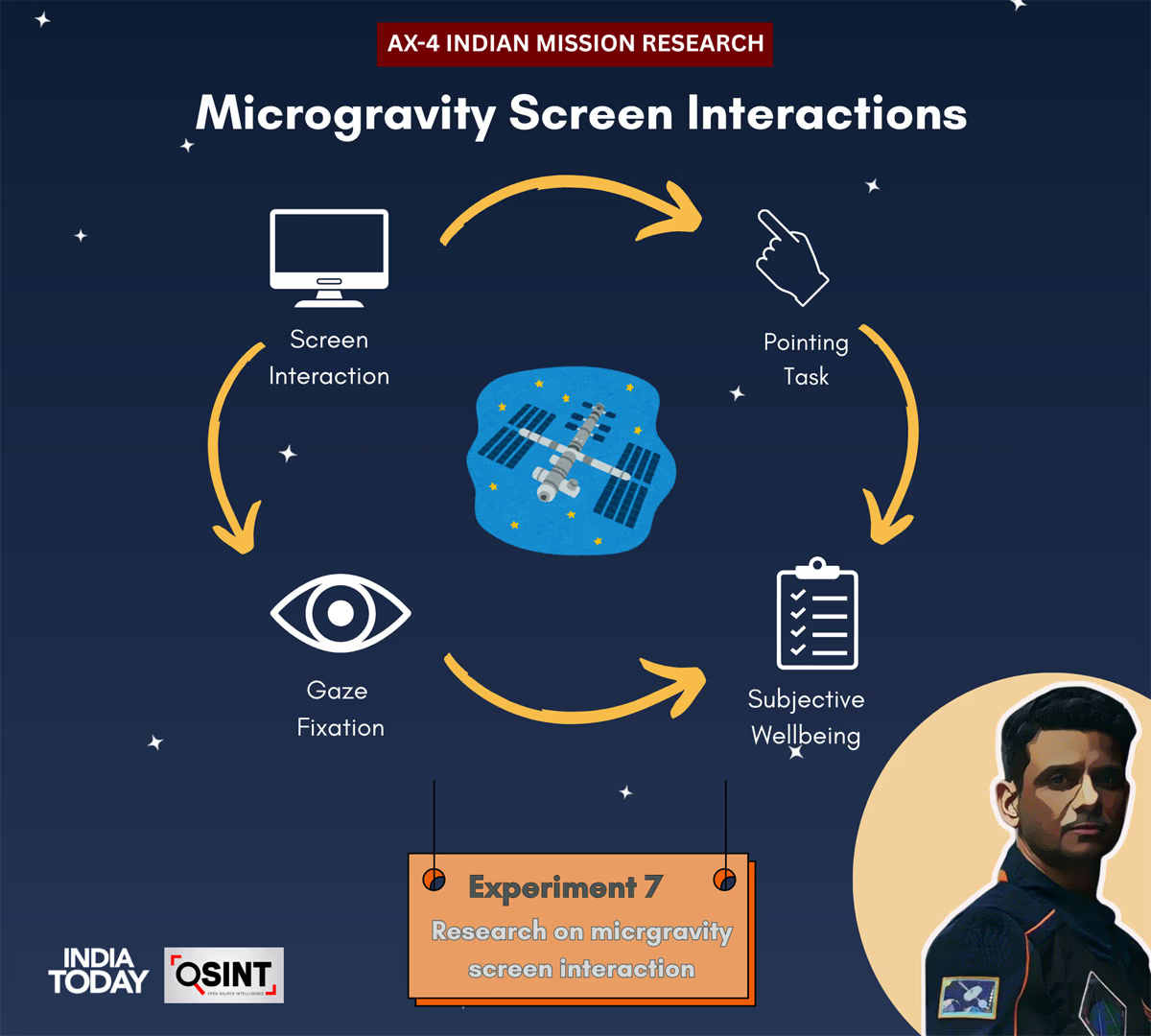
Source: aajtak
Shubhanshu also analyzed computer screen effects on the eyes and brain in microgravity, optimizing digital systems' use in space.
In addition, he conducted research on bone health, radiation exposure, and mental health, contributing to treatments for terrestrial diseases and enhancing astronaut safety.
Public Engagement and Inspiration
Beyond experiments, Shubhanshu actively engaged with the public. On June 28, he spoke with Prime Minister Narendra Modi over a video call, describing the beauty of space. On July 4 and 8, he connected with school children via amateur radio, sharing insights on space life, emphasizing the borderless beauty of Earth from space.
Also Read:
Preparation for Gaganyaan
Shubhanshu's mission was akin to training for India's Gaganyaan mission, set to launch in 2027, where he gained experience in living and working in space, handling emergencies, invaluable for the Gaganyaan team.
Shubhanshu's Routine
His days were packed with experiments, data logging, and teamwork. He mastered cooking, sleeping, and exercising in microgravity. Joy, his toy swan, acted as a zero-gravity indicator, accompanying him faithfully.
